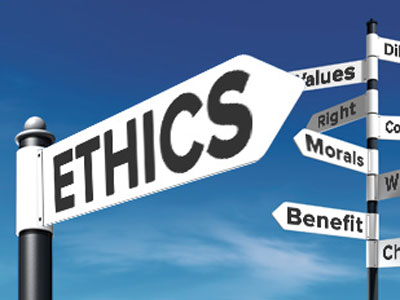Are increased morbidity, mortality and carbon footprint an acceptable outcome?
November 20, 2019

We live in an amazing time when we can source and consume food from around the world. The food choices include organic, free-range, slow-grow, GMO-free or raised without antibiotics. Farmers can leverage the use of innovative technologies, biotechnology and productivity products to increase yield. This evolving ability of consumers to have choice in their food selection and of farmers in their production practices is phenomenal. Yet, it does create ethical challenges and questions with the impact of some production choices -- are increased morbidity, mortality and carbon footprint an acceptable outcome?
For farmers and those in the food supply chain to deliver the choices that consumers desire, there are often trade-offs one must make as it relates to animal care, carbon footprint and economics. The trade-offs can create ethical questions and dilemma? How does a farmer, veterinarian, company or consumer view the potential impact of decisions required?
As one considers the ethical aspects, let’s note and assume all want the best possible animal care and the lowest carbon footprint. And importantly, that farmers take their stewardship responsibility very seriously and will do everything within their means to provide for the care of their animals and produce food in the most sustainable manner. This stewardship approach includes minimizing the food animal contribution to antimicrobial resistance risks. The past decades through the adoption of best practices farmers and animal caretakers have dramatically improved the ability to care for their food animals via biosecurity measures and health management and nutrition management programs.
However, reality means that to provide for certain food policies, marketing claims and choices some decisions must be made. Let’s consider two examples and key questions for the decision-making process.
Raised without antibiotics: In a perfect world, animals would not get sick. In the real-world animals are exposed to bacteria and thus some will get sick. If one mandates raised without antibiotics, yet only antibiotics can prevent, control or treat a bacterial infection, at what point does one decide to provide an antibiotic for the care of the animal? Is it early in the illness process or near death? Is it when one animal gets sick, or when the whole flock or herd gets sick? Is it when one animal dies, or two, or more? In other words, there is a real-life continuum for disease development and animal care, and at what point does taking care of the animal supersede the raised without antibiotics objective? If one knows there is a high risk of a bacterial disease, is it ethical to wait for the animal to get sick and need treatment verses preventing the disease?
A parallel, but also valid question, if one limits the use of certain governmental regulatory approved antibiotics, is that okay? Is it proper animal care to use the second choice, potentially less effective antibiotic, because of an antibiotic policy? Is an additional time of illness acceptable while trying the second best, prior to using the most effective one with the approved specific bug-drug need?
Another parallel, but also valid question, if one markets with a raised without antibiotics claim, does one need to add that when an animal gets sick, we allow treatment, but that animal would not have lived based upon our marketing claim or production method? Is one implying that a healthy animal that was given an antibiotic less safe for a consumer than an animal that was fortunate not to have had an illness with a need for the use of an antibiotic?
Minimal carbon footprint: Each food item we consume has a carbon footprint. This carbon footprint is in part determined by production practices and the food system. If one wants to be the most environmentally friendly creating the least carbon footprint, what choice is best? Are increased productivity, efficiency and yield positives?
Is the GMO seed, no-till farming, that is done with the use of fertilizers and chemicals better? Is the organic, free-range, slow-grow animal better? At what point does a less efficient practice with a larger carbon footprint become appropriate?
Parallel decisions include transportation and packaging, does one have their food delivered each day which means delivery vehicle gas and product packaging? Does one shop at a major retailer and buy all items, or does one shop around, including at the local farmers’ market, thus driving to many stores to buy various items at each? Does one walk, ride a bike, drive a motorbike, take public transportation or drive their car to buy their food?
These are just a few of the decision-making questions to consider for antibiotics and carbon footprint. All individuals make choices each day that they believe and determine are the best for them. From farmers to consumers, and all involved at each step of the food chain, transparency, communication and understanding are key to making informed dietary choices that provide for a healthy, balanced and nutritious diet that is produced sustainably.
One needs to ask, if a certain practice is not good enough for me, is it good enough for others? Should the affluent have choice and the poor have what is left? For food marketers, is it appropriate to create perception around market segments verses true differentiation on attributes as nutrient content? Think of labeling around buzz words as GMOs, chemicals, antibiotics and clean labels? For consumers and companies, to what extent should one impose their own preferences upon the total food production system?
These ethical dilemmas do exist today as consumers and companies are often making food policies, marketing claims and choices that by perception are good, but in reality, do result in increased morbidity, mortality and carbon footprint. Consumer choice is important, and as with any business segment, those selling need to provide what those buying want and are willing to pay for.
Yet, as all business segments find, educated science-based decisions may not align with consumer perception and desires, thus what is one’s responsibility to inform for a more educated choice?
What truly is the ethical socially responsible approach? Are we each doing our part to ideally eliminate the dilemma?
Going forward let’s collaborate from the farm, with the food chain, and with the buying consumers so all can make more educated food choices. Ideally let’s let the farmer, along with input from veterinarians and agricultural experts, make the best decision for their operation on the most ideal production practices that will minimize morbidity and mortality. Further let’s consider the total all-encompassing life cycle analysis for determining our food’s carbon footprint. Then work together to ensure each along the food chain understand the impacts of their decisions.
Yes, each of us has our own preferences, that are ideally based upon scientific fact and understanding. For me the ethical dilemma answer is please provide food for a diet that is nutritiously balanced, delicious and affordable. And yes, that includes plant derived -- grains, vegetables and fruits -- and food animal derived -- meat/poultry/fish, eggs and milk -- sourced choices. And yes, that also means from the best genetics, seed or animal, raised with the most efficient production practices – using innovative technology, biotechnology and productivity products and practices. Please provide such from a healthy animal, or plant, and ensure that it has the least emission intensity per unit of product, or nutrient, of food consumed. Summarizing, for my choice, absolutely ensure that one minimizes the risks of morbidity and mortality and that one minimizes the total life-cycle carbon footprint.
About the Author(s)
You May Also Like





